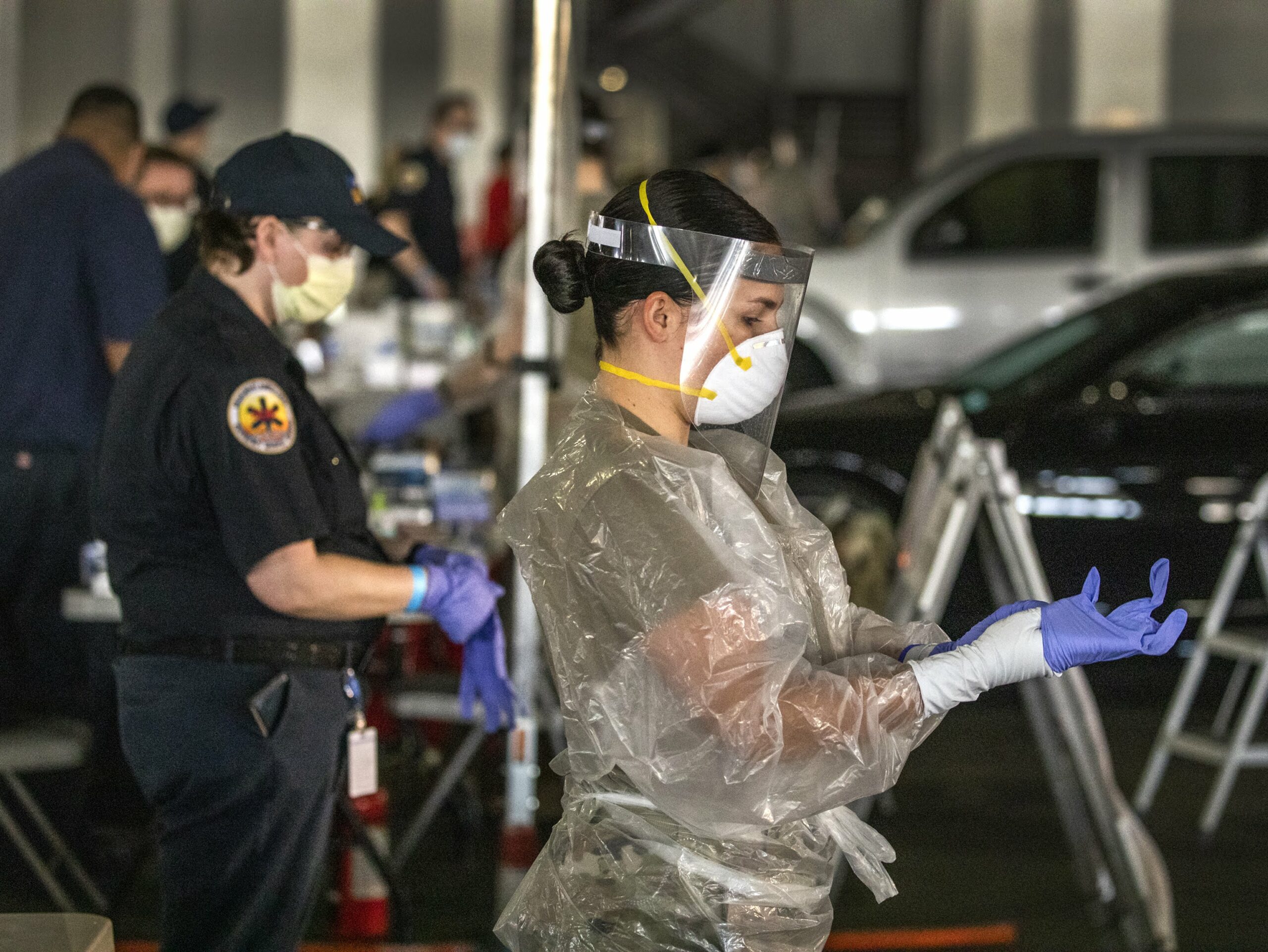State COVID Task Force loosens county testing, positivity criteria as part of shift to ‘new normal’

Nevada’s COVID-19 Mitigation and Management Task Force has adopted new and slightly looser criteria for determining whether counties are at risk of elevated disease transmission as part of a shift to what health officials called a “more sustainable new normal.”
The task force, which last met in mid-September to approve the opening of bars in Clark and Elko counties, voted to approve the modified criteria thresholds in part as a response to recent moves by the state to lift restrictions on large public gatherings.
Though the group took no action to re-raise or loosen restrictions during its meeting, the decision to loosen the county-level criteria comes as several COVID-19 related metrics have been on the rise over the last several weeks.
But state Biostatician Kyra Morgan said during the meeting that the modified criteria would better reflect thresholds used nationally and by other surrounding states, without compromising the standards used by the state.
“The impact is fairly minimal, but I think it makes a lot of sense,” she said.
Over the past several months, the task force has used three criteria to determine whether counties were at an elevated risk of disease transmission, with the panel empowered to enact closures or other restrictions if counties exceed two of the three criteria areas for multiple weeks.
On Thursday, members of the panel agreed to lower the daily average test rate — currently set at an average of 150 COVID-19 tests per day per every 100,000 people in the county’s population — to a 100 per day average. Morgan said the previous standard was “pretty stringent” as compared to national criteria and would better reflect a “new normal” of recent trends in testing.
“Earlier in the pandemic, we had a lot of surge testing events, which realistically long term, when we get years into the pandemic, are not going to be sustainable,” she said. “We’re going to have to reach a baseline of normalcy in our testing volume.”
The other adopted change is a threshold increase from 7 to 8 percent in the state’s test positivity rate, which is measured over a 14-day period with a seven-day lag. While the World Health Organization recommends keeping test positivity rates below 5 percent, Morgan said that the change would provide more cushion to counties while the state began loosening COVID-related economic restrictions.
“We know that as we loosen mediation efforts to open things back up, we can't be naive and not expect that there is some kind of increase,” she said. “I think what we have to be mindful of is monitoring the impact of those increases, and then understanding at what level are we hitting a happy medium between containment but then having the economy as open as possible.”
Morgan pointed out that the effective changes would not push either Washoe or Humboldt counties — currently flagged for elevated disease transmission — below those threshold levels for the current week.
Washoe County Health District Officer Kevin Dick attributed the increase in cases to an uptick in positive tests among young people; about a fifth of the county’s positive results came from individuals between the ages of 18 and 24 between Sept. 27 to Oct. 3.
He said that the uptick in cases happened before the county was approved to reopen bars, and that health officials “haven't really seen anything we can attribute to the bars reopening for the increasing case.”
Still, he said that the county was facing a backlog with disease investigation efforts, and was still deciding whether or not to accept pending applications for future large events in the county.
While Washoe and Clark County health officials had clashed with the governor’s office earlier in the week over being left out over the decision-making process in raising capacity limits, Dick said Thursday that he was pleased with the “productive discussion” in a meeting yesterday between the governor and health officials.
Members of the task force were also petitioned by brothel owners in Nye and Storey counties to consider allowing counties to reopen brothels. Attorney Deanna Forbush, representing the Chicken Ranch brothel in Pahrump, said that the state’s matrix in deciding reopening was creating “winners and losers” that benefited other “skin-on-skin businesses” such as massage parlors or dentists while places of legal sex work remained closed.
“I know this is true, because if the state's metrics were applied evenly, my client would be open,” she said. “Decision makers cannot allow their own individual prejudices, or moral judgments, to discriminate against businesses by applying different standards to similar industries.”
Asked during an IndyFest interview earlier this month about the potential for brothels and strip clubs to reopen, Gov. Steve Sisolak said the topic wasn’t on his radar and wanted to prioritize schools reopening before getting people back in brothels.
